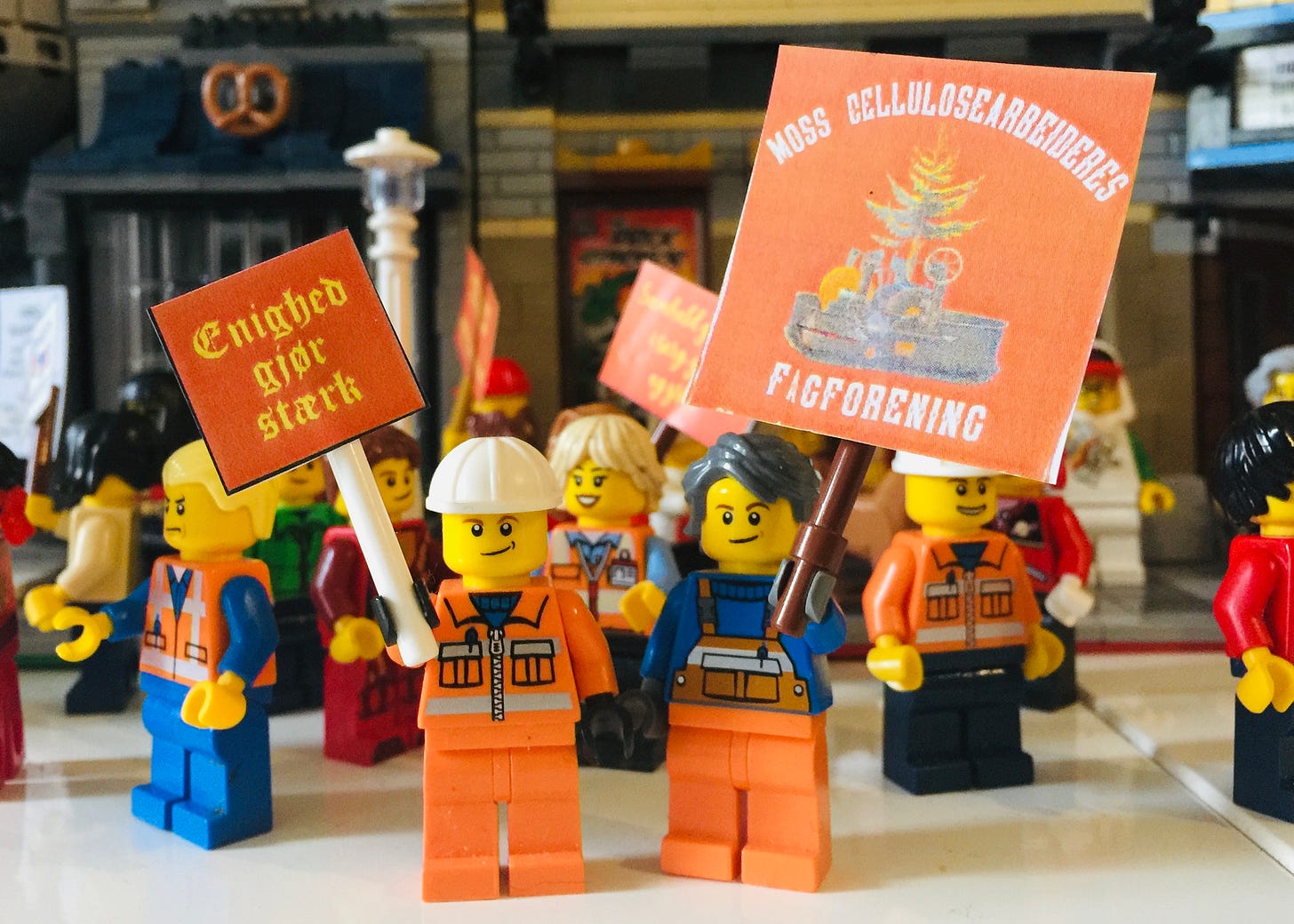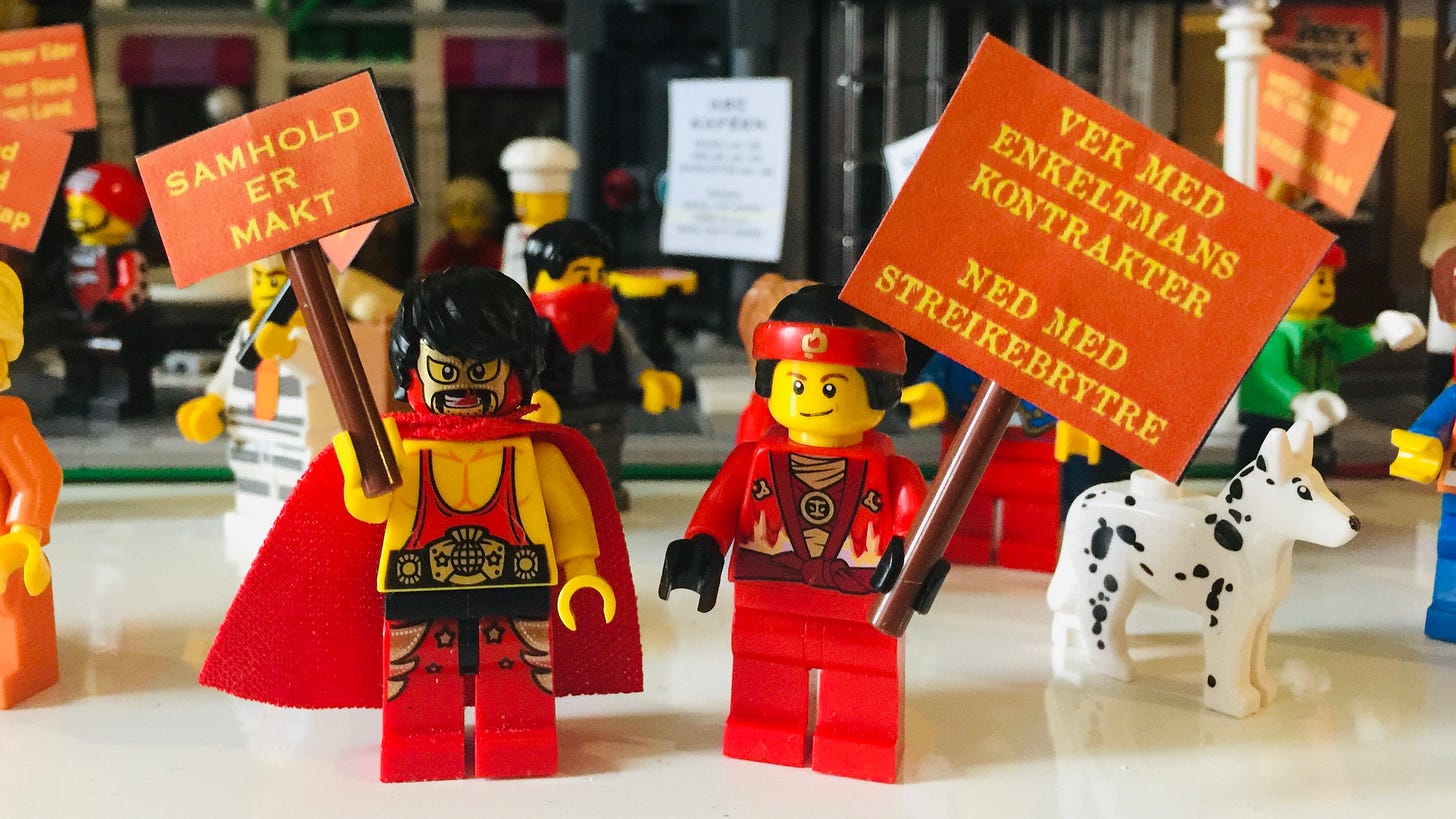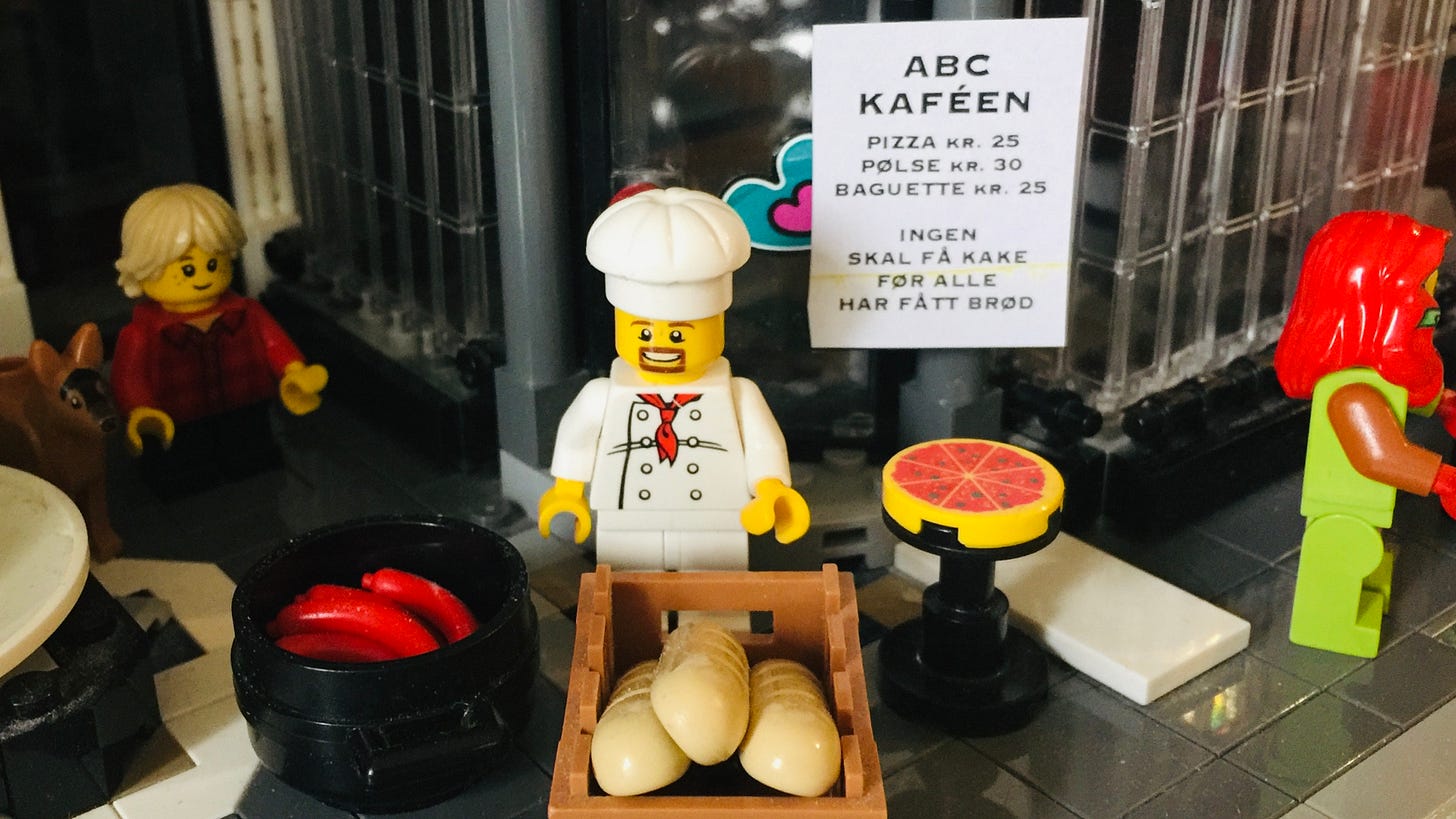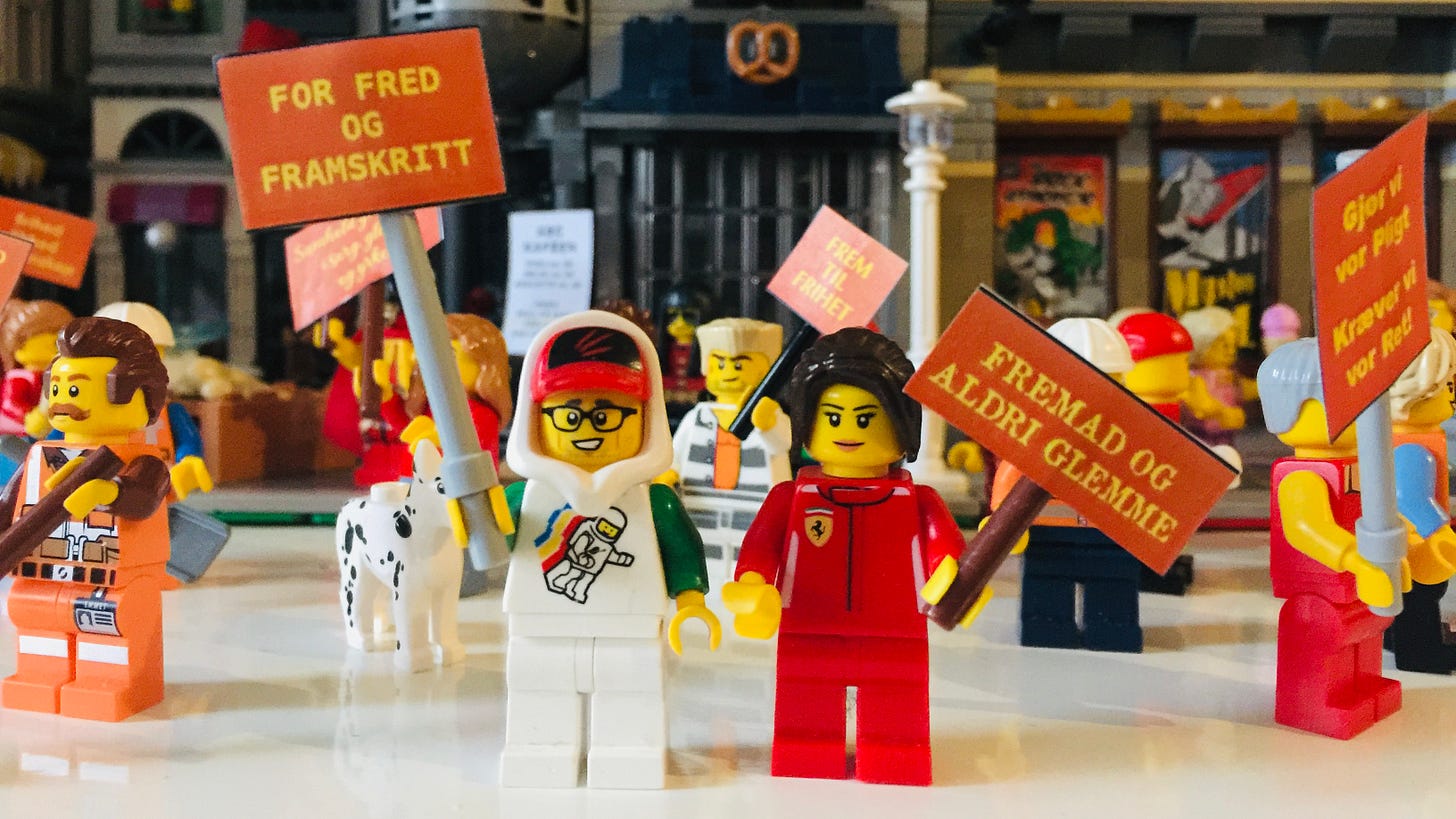Celebrating Labour Day in Legotown
Gratulerer med arbeidernes dag! Happy Labour Day from Legotown! As you can see, people are out in force, much as they would be in real life. About 50% of the Norwegian labour force is unionised and the “father of the nation,” the Labour party’s Einar Gerhardsen, served as prime minister for 17 years immediately after World War II. Solidarity is very much a living and breathing concept here.
My husband’s family has a long history of involvement in Norwegian labour unions. One of his grandfathers was a union leader in Oslo, and his brother works for a union and is an active member of his local branch of the Labour Party. So obviously we had to show up in Legotown to mark the day! We’re wearing red because that’s the colour of the labour movement here.
Although most of the other people in this protest aren’t real, the signs are. The exceptions are mine and the one carried by my brother-in-law, but the slogans on all the others are taken from union banners that were used in marches and celebrations in the late nineteenth and early twentieth centuries. These banners usually announced the trade/occupation of the bearers, the locale and/or city name, and featured a picture of tradesmen’s tools or a person engaged in work. In addition, they often contained “fighting words” like the ones reproduced here. A red background with gold letters is by far the most popular colour scheme.
One other real person is represented by the minifigure with grey hair on the right in the photo below. It’s Arne Willy, my grandfather-in-law.
Arne Willy worked at the Peterson paper factory in Moss, Norway, for many years, and here he carries the banner of the Moss cellulose workers’ union. The original banner is from 1905; the union itself was founded in 1892. The man beside him holds a sign that says “Enighed gjør stærk” or “unity makes [us] strong.” I copied its archaic spelling and Gothic script from a banner from Sarpsborg.
I purposely preserved older spellings in many of these signs because I wanted to highlight the long history of labour in Norway. For centuries, written Norwegian was actually just Danish and also lacked some diacritical marks. (For example, å was typically written aa.) Two different forms of written Norwegian were developed in the mid-nineteenth century, and various spelling and grammar reforms have continued to take place since then. It is therefore often possible to date texts based on spelling.
The slogans in the photo below were probably written before 1907. The man on the left proclaims, “We do our duty [and] we demand our rights!” while his friend says, “With work and faith towards a common goal”. (Originals here and here.)
Some people wearing very non-traditional clothing showed up bearing signs with very old sentiments: “Togetherness is power” and “Down with strikebreakers!” (Originals here and here.)
Historical banners in museum collections bear witness to unions whose members came from traditional female occupations: seamstresses, cleaners, nurses, teachers. Today in Norway, women are more likely to join a union than men. The women below carry signs that say “Togetherness gives us strength in grief, joy, and work” and “Together we build the country”. (Originals here and here.)
Using historical slogans/banners made it difficult to be punny in the same way as in the earlier demonstrations. However, I gave it my best shot.
Our old friend at the ABC Cafe was back, this time with pizza, hot dogs, and baguettes.
The quotation on the menu — “Ingen skal få kake før alle har fått brød” — is from Einar Gerhardsen, Norway’s postwar Labour prime minister. It can be translated fairly inelegantly into English as “No one will get cake before everyone’s gotten bread” and is a clear reference to Marie Antoinette’s statement that peasants ought to eat cake if they have no bread.
Meanwhile, some construction workers brought out their shovels and brooms and an old slogan that says “The groundwork must be solid to bear/carry our society”.
Lastly, a trio of jailbirds made an appearance under the banner “Forward to Freedom” (original here).
In Norway, the labour movement has founded theatres, sporting societies, and schools. Labour fought for the eight-hour day, paid vacation time and sick leave, and safe working conditions. These things have become so ingrained in our society that it’s easy to gloss over the fact that they weren’t always enshrined in the law. But as the two minifigures below say: For peace and progress—forward without ever forgetting.












